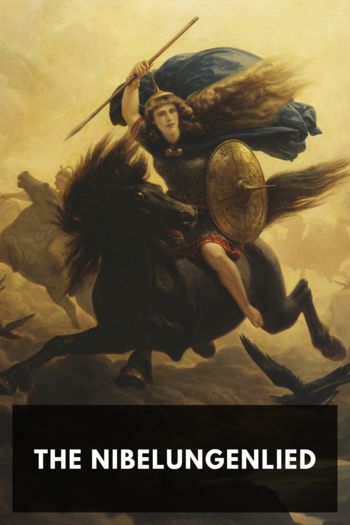The Trials of Radclyffe Hall, Diana Souhami [best sales books of all time .TXT] 📗

- Author: Diana Souhami
Book online «The Trials of Radclyffe Hall, Diana Souhami [best sales books of all time .TXT] 📗». Author Diana Souhami
Radclyffe Hall felt patronized and paranoid. Here was support, but not the sort she wanted. She drew up her own letter of protest and with Una elicited the backing of doctors, booksellers, ministers of religion, social workers. The Bloomsbury petition dwindled to a short piece by Forster, a tepid defence of literary freedom, published in the Nation on 8 September, which he asked Virginia Woolf to sign too. It fumbled any mention of lesbianism; ‘it enters personally into very few lives and is uninteresting or repellent to the majority’, Forster wrote. To Leonard Woolf, he said he found ‘Sapphism disgusting’.
Radclyffe Hall was the plodding amateur, not one of them, not of the elite. She lacked their intellect, style and wit. They did not seek to change minds as she did with her proselytizing, rather they reached out to like minds. They recoiled from her bluntness and felt compromised by supporting her. The use of the word ‘proclivities’, the closeting of their own sexual preferences, the guarded manner of their protest, spoke of their lack of candour and their vanity for the social show.
They had same-sex relationships but liked to demarcate between private indulgence and public discomfort. Vita was an aristocrat and a lesbian, therefore she should not sign a public letter for fear of jeopardizing her social position. Her novel about b.s.ness did not transpire, though both she and the love of her life, Violet Trefusis, believed they could outdo The Well of Loneliness. Vita’s account of their affair lay locked away in a Gladstone bag and was not to be published until after their deaths.
The manuscript of E. M. Forster’s novel Maurice, his admission of homosexuality, was hidden too until he died. A visit to Edward Carpenter in 1913 had inspired it. Carpenter, like Havelock Ellis, was another proponent of the idea of the ‘intermediate sex’. His partner, George Merrill, fondled Forster’s bottom ‘gently and just above the buttock. I believe he touched most people’s’, Morgan wrote.
The sensation was unusual and I still remember it, as I remember the position of a long vanished tooth … It seemed to go straight through the small of my back into my ideas, without involving my thoughts. If it really did this, it would have acted in strict accordance with Carpenter’s yogified mysticism, and would prove that at that precise moment I had conceived.
I then returned to Harrogate, where my mother was taking a cure and immediately began to write Maurice.
He was to shut his baby up in a cupboard for nearly sixty years.
On 1 September John and Una visited Noël Coward. He was in a London nursing home, having had his piles surgically excised. They found him writing the second act of Bitter Sweet. It was not his style to give public support to The Well of Loneliness, but he invited them to visit him and his mother the following weekend at his house, Goldenhurst Farm, Aldington, near Rye. It was a seventeenth-century farmhouse with oak beams, six acres of land, an orchard, ponds and views of the Romney marshes, the sea and the coast of France. John and Una lazed in the sun and had ‘a delightful day’. They stayed at the Mermaid Inn in Rye and themselves hunted for a house away from the squalls of city life. They took a short lease on Anne Eisner’s Tudor cottage, Journey’s End, with its views of the River Rother, of timber ships with tall masts and of lighthouses and the sea. Lighted by oil lamps and heated by wood fires, it was, said Una, ‘a heavenly haven of peace in which we pulled ourselves together for the next round’.
In London Radclyffe Hall offered the Holland Street house for sale. She took translation copies of The Well to Audrey Heath who within a week sold Dutch rights. She wooed Blanche Knopf with lunch at Kettners and dinner at the Savoy and urged her to keep her promise to publish in America. And Jonathan Cape pressed on with his subversive plan. His partner, Wren Howard, a stocky man with a military manner, blue eyes, red cheeks and a bristling moustache, flew to Paris on 6 September with the papier-mâché moulds of The Well of Loneliness in suitcases as hand baggage. It was the early days of air travel and scrutiny by Customs at airports was scant.
Howard delivered the moulds to John Holroyd-Reece, proprietor of the Pegasus Press at 37 rue Boulard. Holroyd-Reece had worked with Cape before and had met Radclyffe Hall at Datchet at Ida Temple’s house. He had voiced interest in publishing The Well of Loneliness himself. European in outlook with a German father, Johann Riesz, and a Scottish mother, he was keen on taking risks and making money. He had a wife, a lover, a taste for lavish houses and expensive antiques. He instructed a London solicitor, Harold Rubinstein, a partner in the firm of Rubinstein, Nash & Co., ‘a man of liberal and literary sensibilities’, to act for him and Pegasus Press. He introduced Cape and Radclyffe Hall to Rubinstein who acted for them too.
Cape leased the rights of The Well to Pegasus and gave Holroyd-Reece a list of unfulfilled British orders and an overseas mailing list. Within three weeks pirate





Comments (0)